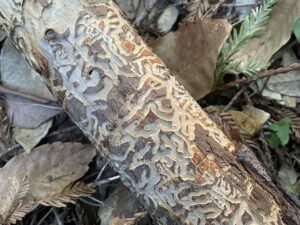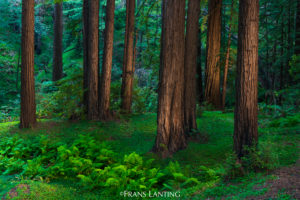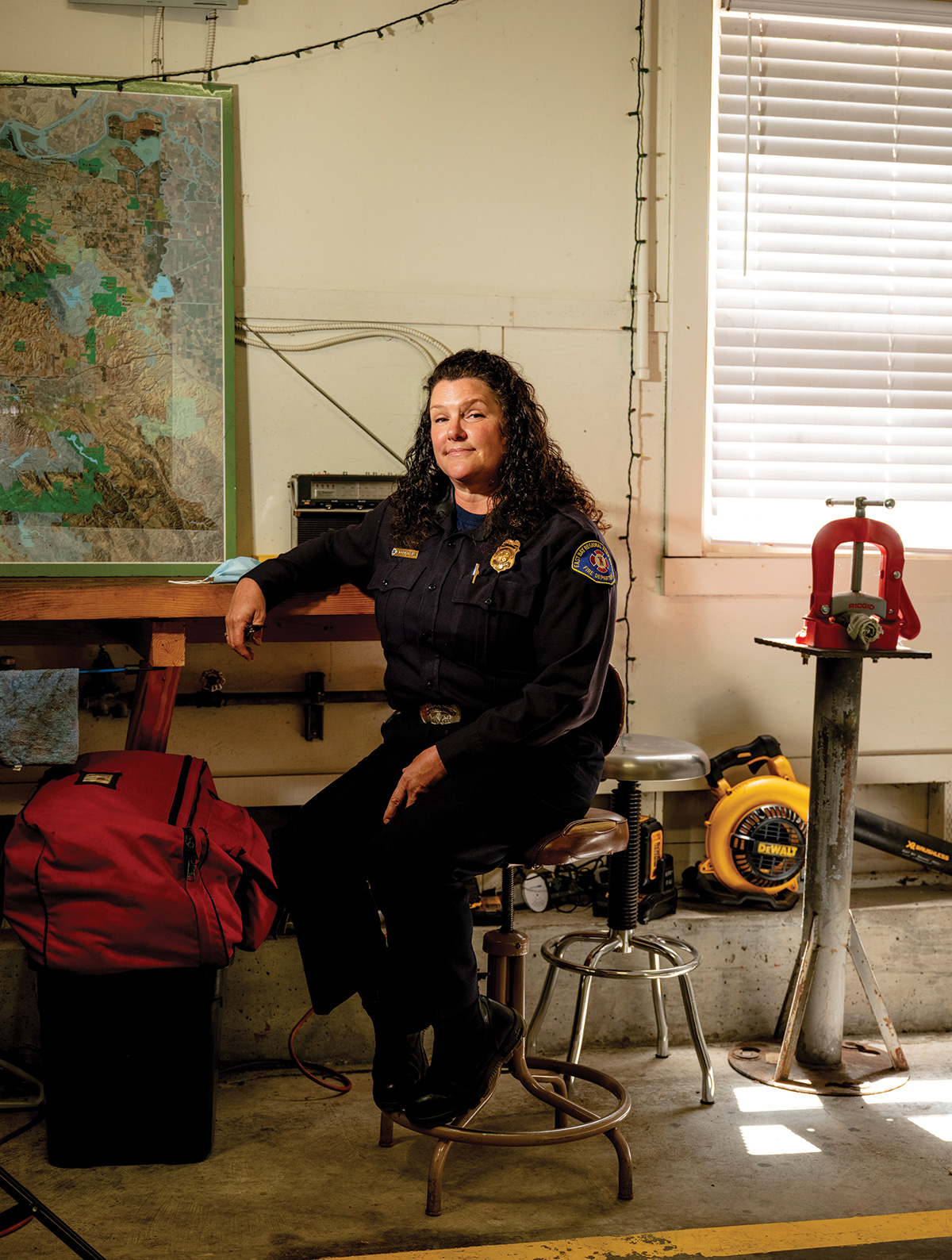
I met Aileen Theile on a warm afternoon in April, in a dirt parking lot at a trailhead in Tilden Regional Park. To the west, the metropolitan sprawl of Berkeley and Oakland ran across seemingly endless successions of hills. To the east, the land dropped away steeply and was carpeted in green grass and flowers. Farther down, in the valley below, there was smoke.
Theile, the fire chief of the East Bay Regional Park District Fire Department, stepped from her dusty SUV and glanced at her watch. “Thanks for being here on time,” she said. “I’ve only got about an hour to talk.”
She was in a hurry for good reason. Precipitation over the previous year was less than 40 percent of normal and huge swaths of California including all of the Bay Area had recently been declared by officials to be in a state of “extreme” and “exceptional” drought. Soon, the grasses would dry out and the green hillsides would turn a parched brown. Fire season was fast approaching—and there was a lot of work yet to be done.
Theile is small but of strong physique. Her dark curly hair spilled down around her shoulders. She was dressed not in the customary white shirt of an officer but in her “service blues.” A 27-year veteran of the East Bay Regional Park District, Theile has worked her way up the entirety of its professional ladder. She began her career in 1994 as a park ranger. The following year, she was hired by the EBRPD Fire Department as a firefighter. In 2018, she was promoted from captain—a position she had held for six years—to fire chief, becoming the first woman to occupy the top role in the department’s 58-year history.

Theile looked out over the sylvan landscape punctuated by tall eucalyptus, live oak, bay laurel and Monterey pine—a small slice of her department’s vast jurisdiction, which collectively covers an area more than five times larger than the city of San Francisco. We stood at the unmistakable margin of city and open space—the so-called wildland-urban interface, or WUI (pronounced “woo-ee”), a zone inhabited today by an estimated 12 million Californians. Not far from our meeting place, multimillion-dollar homes stood amid the trees, at the edge of Tilden, in places where fire risk has become critical. “This is a naturally very fire-prone place,” she said. “But we forget that because we’ve managed it in the other direction. We’ve concentrated our efforts on putting every fire out.”
Today, the East Bay Regional Park District’s land holdings comprise roughly 130,000 acres—forests, marshes, grasslands, beaches, and a host of other landscapes—across two counties. The scale and diversity of the landscapes it manages, along with the hundreds of miles of wildland-urban interface along its boundaries, are what make the EBRPD-FD’s mission a complex one. To carry out its work, the department employs a staff of 68 firefighters, 32 of them full-time, along with 36 who are on-call.
Theile and her modest-size staff are faced with a tricky balancing act between the district’s mission, to “preserve a rich heritage of natural and cultural resources” while also intensively managing its lands using a host of techniques—from selective cutting to prescribed burning—to make them safe for visitors and more resilient to wildfires. “How do we protect the environment and protect the public from wildfires at the same time?” Theile asked. “That is the question.”
The EBRPD Fire Department was founded in 1963. At the time, the Bay Area was a very different place. Its footprint and population were a fraction of what they are today, with most residents concentrated in the flatlands along the Bay. In those early years the department’s role closely resembled that of the U.S. Forest Service, with lookouts built on peaks across the region. “We were the ‘eyes in the hills’ for the communities below,” Theile said.
Over the years, however, the cities of the East Bay filled the tidal flatlands and expanded into the rural periphery, growing into the margins of the wildland-urban interface. As these patterns of growth took hold, the region’s fire risk increased dramatically. The department’s pivotal moment came in 1991, when a massive conflagration blazed across the hillsides and neighborhoods perched above the Caldecott Tunnel. The fire began on October 19 on a small private parcel on Buckingham Boulevard, near the boundary of Claremont Canyon Regional Preserve. Firefighters mostly contained the small blaze that first day. But the next morning, heavy winds transformed the hot spots into a rapidly spreading inferno that rained embers across the hills. The Oakland Hills firestorm, or “Tunnel Fire,” was one of the worst disasters in state history, destroying almost 3,600 homes, killing 25 people, and causing an estimated $1.5 billion in damage.
The cause of the firestorm was never determined, but the impact on EBRPD and fire departments across the state was transformative. “After 1991 everything changed,” said Theile. “We began to figure out that we’re all connected, that our communities have coalesced.”
Before the conflagration, few departments in the Bay Area had equipment suited to wildland firefighting. But afterward, Theile said, even municipal departments began to bolster their wildland firefighting capacity, investing in wildland training and specialized firefighting equipment. The most conspicuous shift, said Theile, was the acquisition of so-called Type 3 engines—specially designed fire trucks built to fight wildfire in rugged terrain—by departments across the Bay Area.
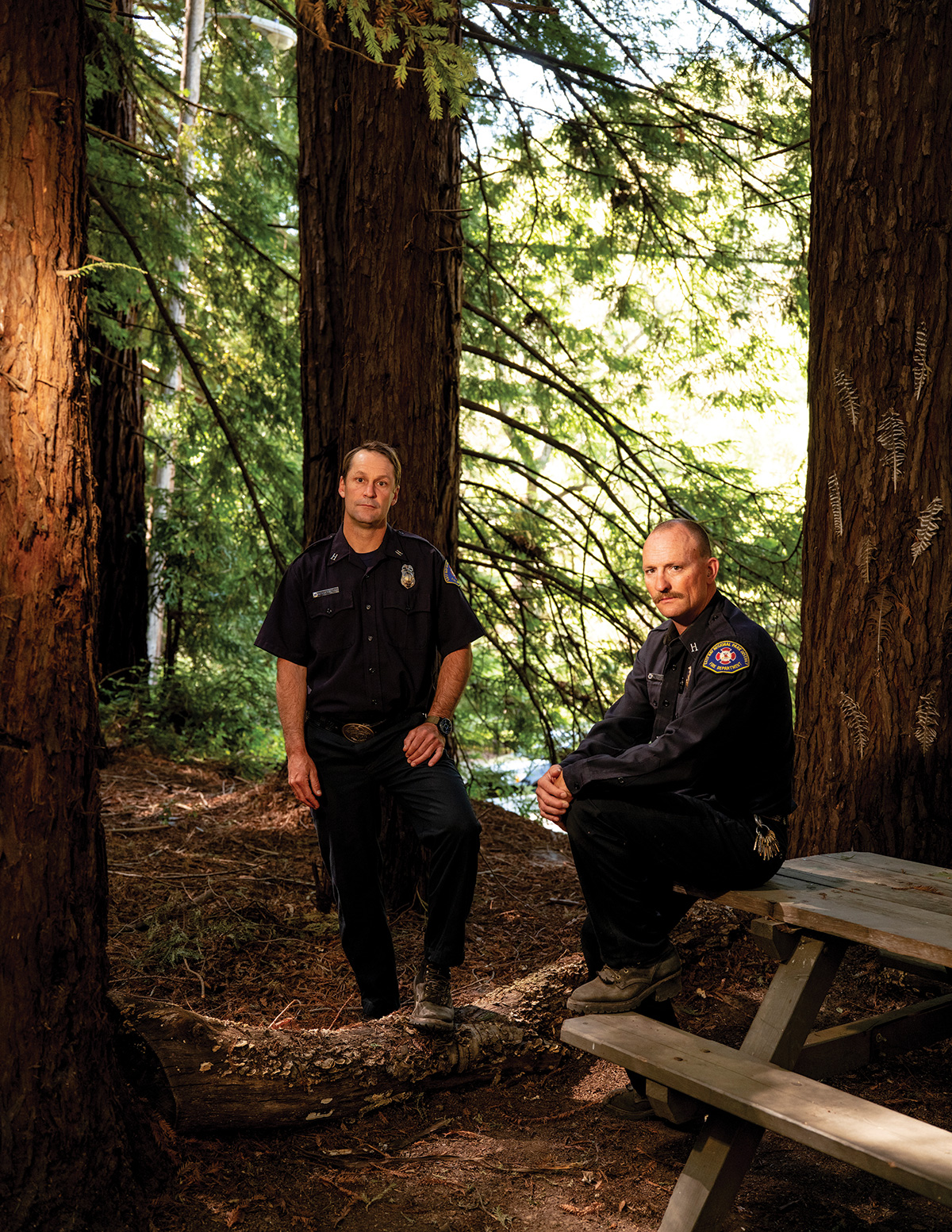
The Oakland Hills firestorm also fundamentally changed the way agencies interact in response to wildland fires. “In the Bay Area you have so many jurisdictions that cross over,” said Theile. She noted that large portions of the land that the EBRPD oversees are designated as state response areas, or SRAs. “When there are fires in these places, you’re going to get a lot of players,” she said. “You’ll get us. You’ll get the state. You’ll get the county, and you’ll probably get one or two municipalities.”
When fire danger is critical, even the smallest of blazes present a serious threat. Thus, explained Theile, the overlap in response areas is an intentional redundancy meant to ensure that lots of resources can be marshaled quickly. “We don’t fight wildland fires alone anymore.”
Firefighting in the 21st century means being prepared for “the worst-case scenario.” “It’s one of the key priorities of any agency in this day and age—catch fires when they are small,” said EBRPD-FD captain Patrick McIntyre, who joined us that day. “The goal is to mount a rapid and large response.” If a fire doesn’t get caught right away, he said, the situation can quickly become unmanageable: “Once a fire gets to nearby fire breaks or adjacent property lines, all bets are off.”
“Call the world,” Theile added. “You can always dial it down.”
This shift in approach is in direct response to a shift in fire behavior. Fire season across California now peaks earlier and has lengthened by two and a half months annually, according to Cal Fire. In this drier, warmer era, fires are burning longer and more intensely. Half of the 20 largest California fires on record have taken place in the past decade. Last year’s SCU Lightning Fire Complex fires—the third largest in size in California history—sprawled across 400,000 acres in six counties, including Alameda and Contra Costa. Six thousand acres of EBRPD lands burned.
As the threat of megafires has increased so, too, has the department’s operating budget—from $1.2 million in 2002 to $5.1 million in 2021. Over the same period, the department’s full-time staff grew more than fivefold, from 6 to 32. In this new era of megafires, said Theile, the best approach is to work proactively, to reduce the chances that fires will start in the first place. This is accomplished through a host of techniques, from weed-chomping goat herds to mechanical thinning and prescribed burning. The department’s mandate is laid out in its Wildfire Hazard Reduction and Resource Management Plan, a comprehensive document outlining how it will mitigate fire risk while adhering to the district’s ecological priorities. “With our fuels management program, we have to carry out the park district’s mission,” Theile said. “When we look at an area that needs to be treated or thinned, we want to leave it better than we found it. We want to improve habitat rather than destroy it.”
To illustrate, McIntyre pointed to a nearby hillside, which was covered with a half dozen or so Monterey pines, each one easily 60 or 70 feet tall. These fast-growing, short-lived trees are not native to this part of California and can be highly susceptible to fire: “They have different growth characteristics here than in their native range,” he said. “These ones have limbs all the way down to the ground, which changes the fire behavior and makes them a lot more susceptible to canopy and crown fires.”
One might think the best solution would be to simply cut the pines down and eliminate the risk entirely. But McIntyre—who before joining the department studied forestry at Cal Poly and worked as the park supervisor at Wildcat Canyon Regional Park—said that is not how ecologically responsible fire management works. “You can’t just clear-cut an area,” he said, noting that even though the trees are nonnative and pose a fire risk, they also play an important ecological role, providing habitat to numerous species and increasing soil stability. “If you remove the trees, you’ll daylight different species that need the tree cover and you’ll change the dynamics of the forest.”
In this case, he said, instead it’s smarter to carefully thin vegetation to create “shaded fuel breaks,” a patchwork of carefully spaced trees and shrubs. Not only do these clearings look more “natural” to visitors, but they are far less disruptive to forest ecosystems. And by helping to prevent vegetation in the understory from drying out, they also aid in keeping fire on the ground rather than letting it spread to treetops, where it can become a fast-moving crown fire. These sorts of blazes are unpredictable and can devastate huge areas as they cast embers miles away.
Overall, McIntyre said, the department is striving to mimic a natural pattern of fire disturbance. “If a fire goes through an area, it doesn’t burn every bit of it,” he said. “It leaves small undisturbed areas.” These small “brush islands,” in turn, become important sites of local biodiversity. “The most rewarding thing is to come back later and see raptors perched in trees, in places where they had no ability to hunt before,” he said. “By managing in a smart way for fire we gain the added benefit of new wildlife habitat.”
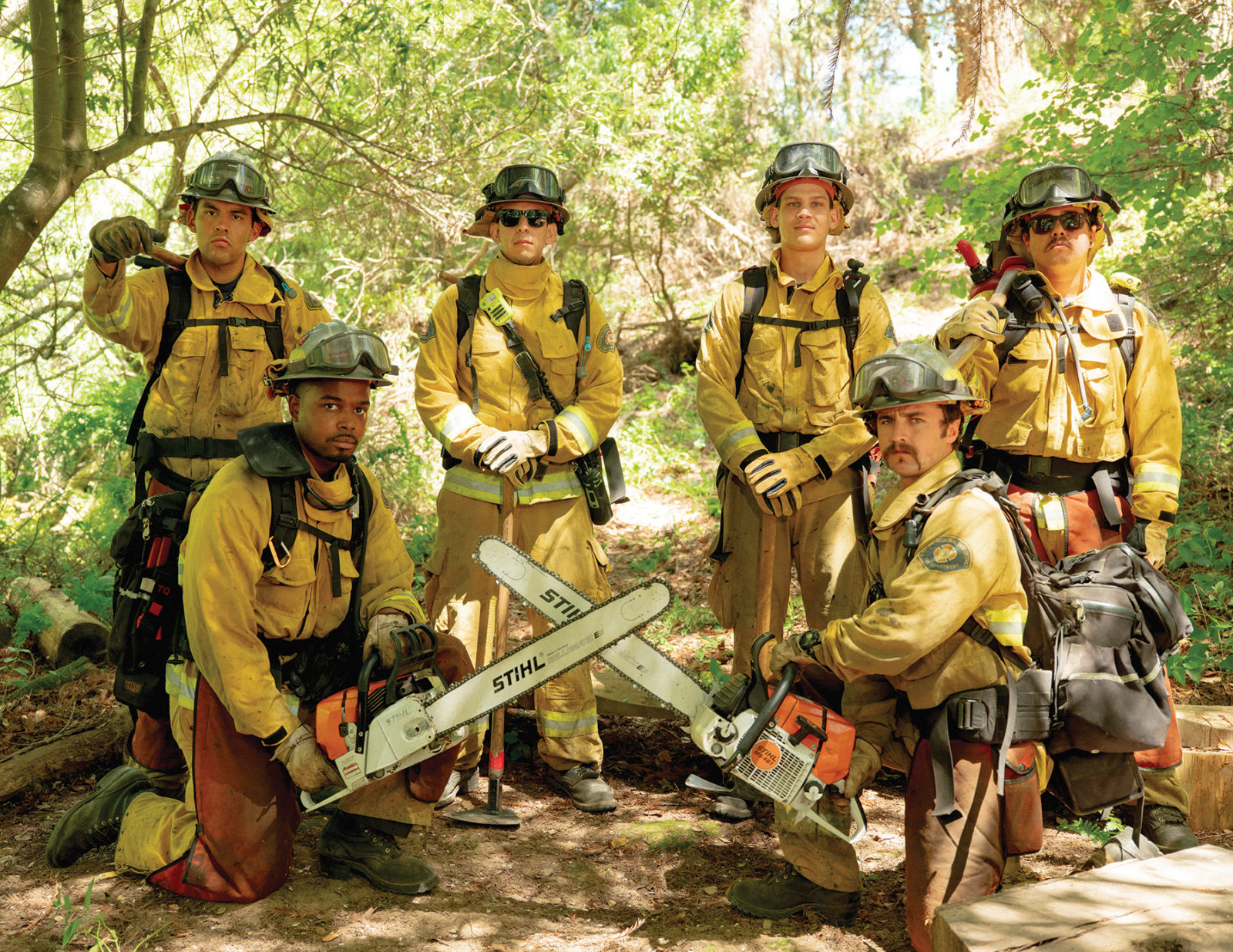
Theile checked her watch once more. Our hour was up, and she had to take her leave. But McIntyre wanted to show me some fuels reduction work he and fellow captain Mike Sweany were overseeing along South Park Drive, in the valley bottom of Tilden park.
As we drove down the winding grade, I realized this was the source of the smoke I had smelled earlier. It was not a wildfire but a thinning and controlled burn project being overseen by the EBRPD’s fuels management crew. Established in 2019, the crew is the first of its kind in the East Bay. The nine-person team’s informal moniker is “the Diablos,” derived from the hot, dry winds that blow from the east, and dry out vegetation, greatly increasing fire danger.
Piles of limbs and logs were set in the dense stand of oak and laurel. Several slash heaps had already been reduced to smoldering piles of ash. The goal was to clear the understory of flammable brush at a time when vegetation was still green and fire danger low. Here and there amid the greenery were basket-like weavings of sticks. These, McIntyre explained, were not slash but nests built by dusky-footed wood rats, an endemic and protected species in the park. “They are pretty fascinating little critters,” he said, pointing out that the mitigation work takes into consideration a wide array of animals and plants that inhabit the area. “We work around them.”
We walked into the recently thinned forest, the sunlight diffusing through a thin veil of smoke. Groups of firefighters huddled around the smoldering piles, making sure the small fires were extinguished before moving onto the next. “Before we cut this you would have needed a machete to get through here,” said McIntyre. Tending one of the burning piles was Rudy Escobar, crew leader for the Diablos. The 29-year-old moved to the Bay Area from his native Los Angeles, where he worked the lines on several large fires with Cal Fire before joining the district fuels management team last year.
By the end of the year, Escobar, McIntyre and the rest of the fuels management crew will continue to “treat” some of the roughly 3,000 acres of “high priority” lands across the East Bay parks. These landscapes represent a small but strategic slice of the district’s land holdings that were identified using a fire risk management computer program called FlamMap. “Could we use more resources to treat more land across the park district? Absolutely,” McIntyre said. “But given our budget and personnel constraints, this is the best we can do.”
“Fire season is pretty much year-round now,” Escobar said, adjusting his helmet. “We’ve got to be cautious and do the hard work earlier in the year so we can be safe later on.”


